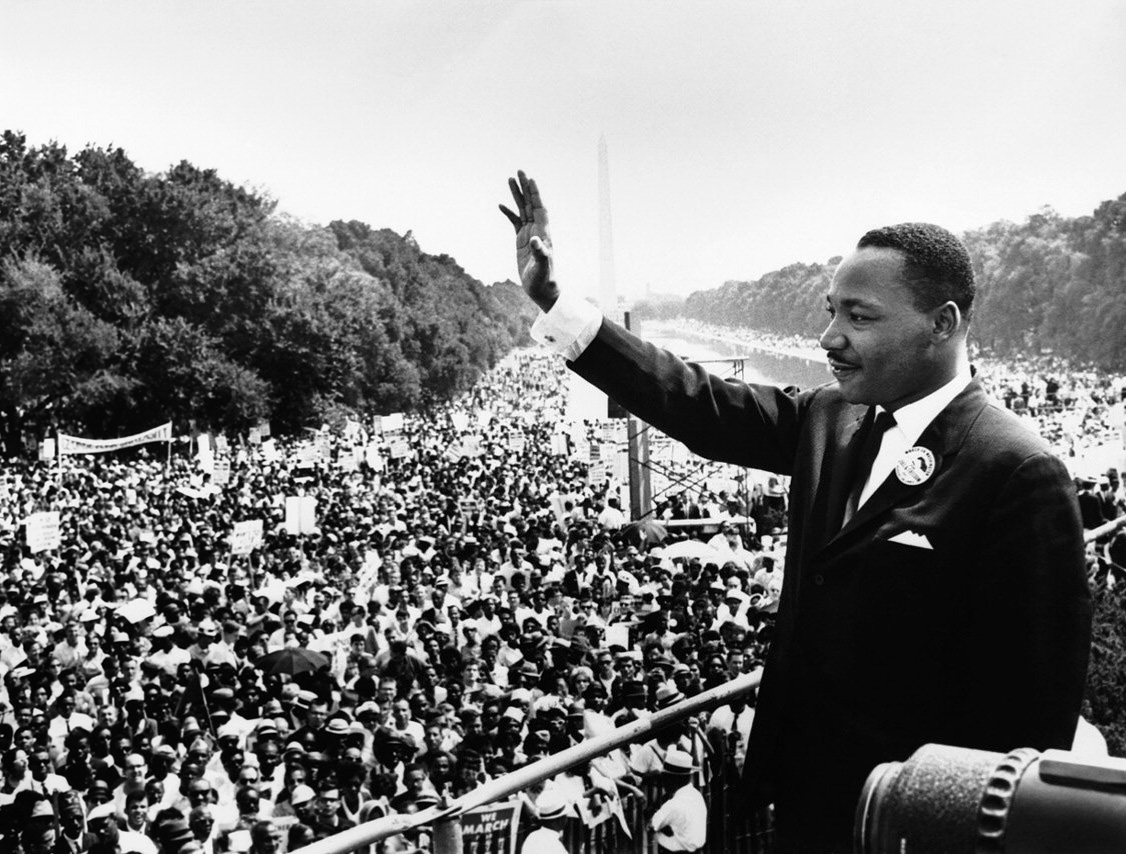MARTIN LUTHER KING

Dr. Martin Luther King Jr. was an American Baptist minister, activist, and leader in the civil rights movement. Born on January 15, 1929, in Atlanta, Georgia, Dr. King became one of the most prominent and influential figures in American history. He is best known for his role in advancing civil rights through nonviolent civil disobedience and his passionate speeches. Dr. King fought tirelessly for racial equality and justice, leading the Montgomery Bus Boycott and helping to organize the Selma to Montgomery marches in Alabama. He was also a key figure in the formation of the Southern Christian Leadership Conference and the inspiration for numerous movements advocating for peace, justice, and human rights.
POSITIVE OR NEGATIVE RHETORICAL ACTION
The histogram for Dr. Martin Luther King. Jr. has the most predictable results by far. Dr. King is a famous nonviolent activist and it therefore is sensible that both of his analyzed speeches have little to no mentions of direct action. The I Have a Dream has zero mentions of direct action, but his Mountaintop speech has some. This is not because Dr. King advocated violence, but because this speech was given in 1968 and Dr. King had been losing hope. And just as with many of the other speakers, Dr. King was assassinated the day after giving his Mountaintop speech.
"I HAVE A DREAM"
In "I Have a Dream," Dr. Martin Luther King Jr. begins the speech by referencing the Emancipation Proclamation and the promise of freedom for Black people. He then goes on to describe the ongoing struggle for civil rights, highlighting the injustice and discrimination faced by Black Americans. He calls for an end to segregation and for the creation of a society where all people are judged by the content of their character, rather than the color of their skin. The speech reaches its climax with the famous "I Have a Dream" section, where he paints a vision of a world where people of all races can live together in peace and harmony. He declares that he dreams of a day when his children will be judged not by their skin color, but by their character. The speech ends with Dr. Martin Luther King Jr. urging his audience to continue the fight for justice and equality, and to never give up until their goals are achieved.
NETWORK GRAPH

Dr. King’s first speech analyzed has a large chunk of references to Africans. Despite Dr. King advocating in the speech for all people despite race to live unitedly, he mentions African as a group frequently because those are the people who experience heavy discrimination.
"I'VE BEEN TO THE MOUNTAINTOP"
In "I've Been to the Mountaintop," Dr. Martin Luther King Jr. discusses his own mortality and the possibility that he may not live to see the promised land of racial equality. He then goes on to emphasize the importance of the civil rights movement and the need to continue the struggle for justice and equality. He also encourages his audience to use nonviolent resistance to achieve their goals, and to not be afraid of opposition or violence. One of the most powerful moments in the speech is when Dr. Martin Luther King Jr. talks about the Montgomery bus boycott and the power of collective action. He reminds the audience that when Black people refused to ride the buses, they were able to bring about change, and encourages them to continue to use their economic power to push for change. Unfortunately, Martin Luther King Jr. would be murdered the very next day.
NETWORK GRAPH

In Dr. King's second analyzed speech, the most frequent references are to African-Americans, baptists, and SCLC. All of these sets and orgs directly relate to Dr. King himself, which explains the frequent mentions.